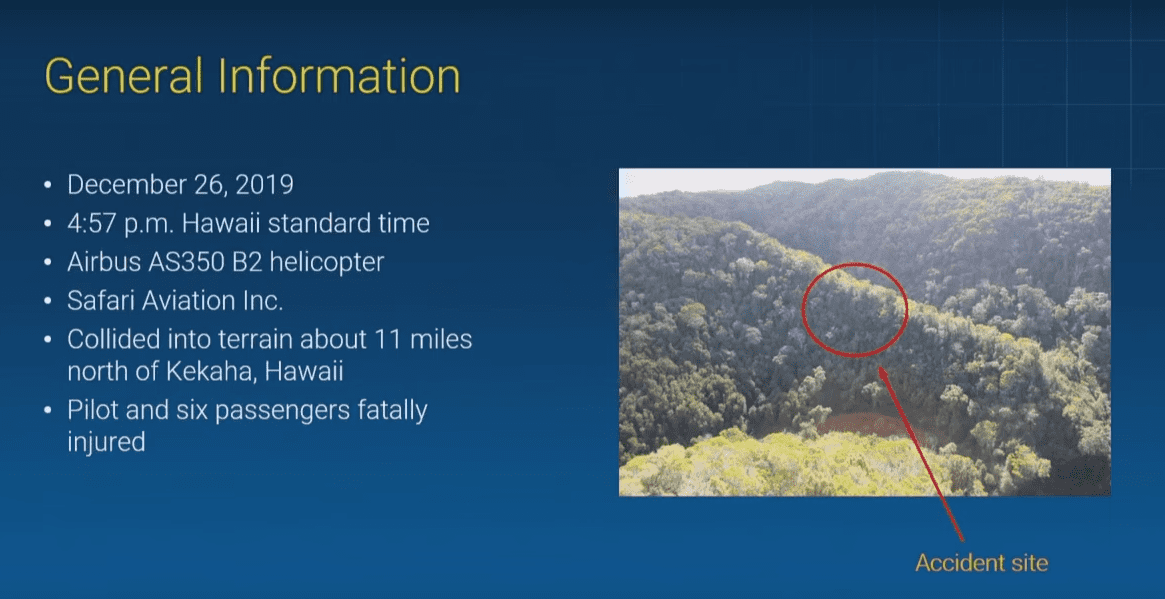The December 26, 2019 Safari Aviation Inc. Kauai helicopter tour crash that killed seven people was caused by Safari’s lack of safety management processes to identify problematic meteorological conditions, reports the National Transportation Safety Board (NTSB) in a report released on May 11th, 2022. The report also cited an atypical weather pattern, a delayed implementation of a Hawaii weather camera system, a lack of leadership in weather training programs for air operators and ineffective oversight of air tour operators’ weather-related operating practices.
The Safari helicopter crashed on a remote mountainside during a Na Pali Coast helicopter tour. The crash killed the 69-year-old pilot and six passengers, including a family of four from Switzerland and a mother and daughter from Wisconsin.
The weather on Kauai had been favorable for tours for most of the day, the NTSB reported, however, just before the flight departed, low clouds and rain began moving onshore from the northwest (which was an atypical weather pattern for Kauai) and affecting locations on the tour route, including areas where the accident flight was headed. At least three other tour pilots saw the adverse weather and decided to divert their tours away from it, according to the NTSB. The Safari pilot, however, decided to continue the tour into deteriorating weather, eventually losing adequate visual references before the helicopter struck terrain, the NTSB reported.
The NTSB made a number of recommendations to the FAA regarding the crash, including improving FAA oversight of air operators, developing infrastructure improvements in radio communications and flight position tracking and implementing processes that will improve decision making in potentially adverse weather conditions.


Leave a comment